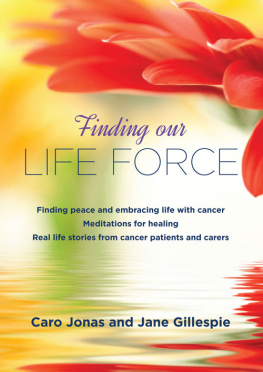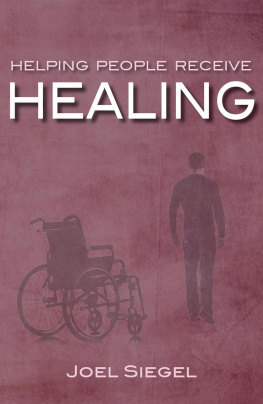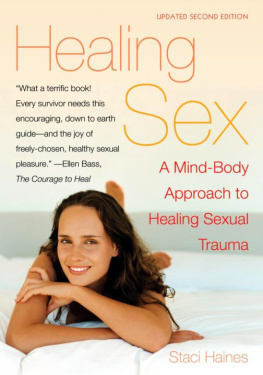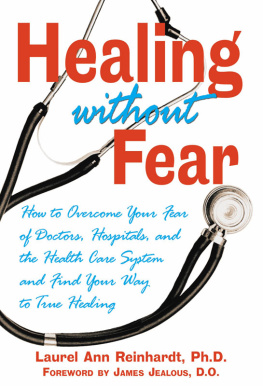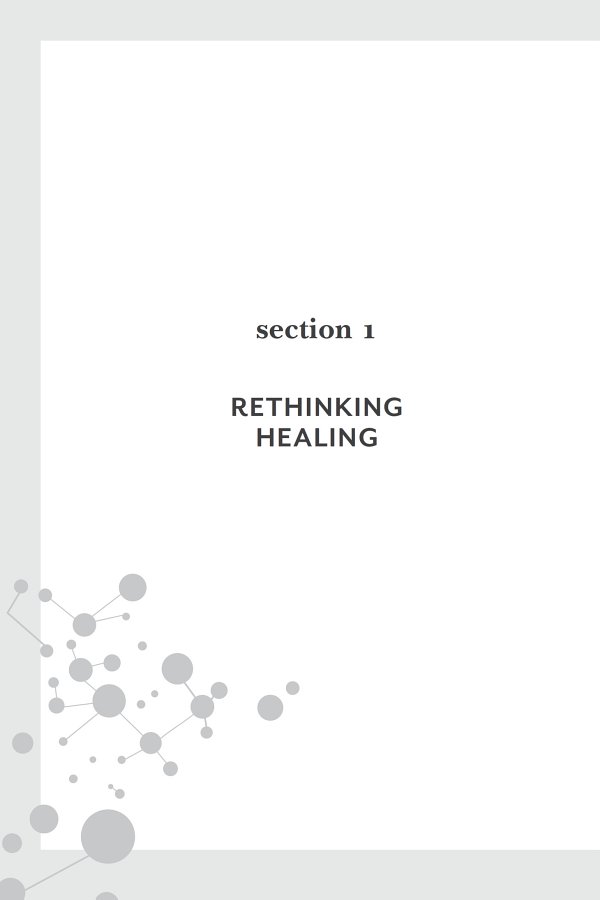Over the past three decades, the author has seen hundreds of patients. Throughout this book, he has drawn on the stories they have generously shared to illustrate the vast range of treatment experiences. Many of the case histories you will read are composites. When the author has based examples on particular patients, he has changed their names and distinguishing features in order to protect their identity. Any resulting resemblance to persons alive or dead is entirely unintentional and coincidental.
In addition, the information and advice presented in this book are not meant to substitute for the advice of your family physician or other trained health-care professionals. You are advised to consult with health-care professionals with regard to all matters pertaining to you and your familys health and well-being.
As of press time, the URLs displayed in this book link or refer to existing websites on the internet. Penguin Random House LLC is not responsible for and should not be deemed to endorse or recommend any website other than our own or any content available on the internet (including without limitation, any website, blog post, or information page) that is not created by Penguin Random House LLC.
Published in the United States by Lorena Jones Books, an imprint of the Crown Publishing Group, a division of Penguin Random House LLC, New York.
Lorena Jones Books and the Lorena Jones Books colophon are trademarks of Penguin Random House, LLC.
Names: Jonas, Wayne B., author.
heal / Wayne Jonas, MD.
Description: California : Ten Speed Press, [2018] | Lorena Jones books. |
Includes bibliographical references and index.
Subjects: LCSH: Healing. | Nature, Healing power of. | Mind and body. |
BISAC: HEALTH & FITNESS / Healing. | HEALTH & FITNESS / Healthy Living. |
HEALTH & FITNESS / Health Care Issues.
INTRODUCTION
THE NEED FOR A NEW UNDERSTANDING OF HEALING
Most of the treatments we think produce healing do not work when exposed to rigorous scientific scrutiny. Yet people often get better. Why? How?
This book argues that the vast majority of healing comes from a few basic principles that can be used effectively by any systemancient or modern, conventional or alternative, proven or unprovenand by both doctors and patients in their daily lives. The secret: to elicit a meaningful response in the person who requires healing.
My approach is based on almost forty years of seeing patients as a mainstream family doctor, as a trained scientist, and as an explorer of many medical systems. I discovered how healing happens through my work with patients, as director of the Office of Alternative Medicine at the National Institutes of Health (NIH), and as a research scientist at the World Health Organization (WHO), Walter Reed Army Institute of Research, and Samueli Institute.
In this book, Im going to give you a simple, systematic approach to real healing. Drawing on the most rigorous scientific evidence available as well as wisdom from ancient healing traditions, I will show you that:
Only 20% of healing comes from the treatment agent that the doctor applies to youwhether that is surgery, drugs, acupuncture needles, herbs and supplements, diet, or anything else external to you.
A full 80% of healing comes from constructing a meaningful treatment response, unique to you, which is internal and highly personal, using simple principles and components.
You can activate your own inherent healing processes and get your physician and others on board to help accelerate your healing journey, making any approach more effective, safer, and less expensive. And these processes can prevent the majority of chronic diseases in the future.
I am not arguing, as some others do, that you can simply think yourself into healing. And I am well aware that understanding what stimulates healing or prevents disease will not fix a broken bone, cure cancer, or stop a heart attack. However, the top ten reasons for seeing a doctor, according to a study by the Mayo Clinic, include pain (especially back pain), fatigue, cognitive dysfunction, hypertension, diabetes, obesity, chronic heart or lung problems, or brain diseases such as Alzheimers, Parkinsons, or depression. Almost all of these conditions accelerate and increase as we age, so even if you feel healthy now, chances are if you live long enough, you will get more than one of these conditions, unless you seek out ways to prevent them.
If you understand how healing really works for the most common chronic conditions, you can take greater control of your own recovery, increase the likelihood that any specific treatment will be effective, prevent many of the diseases of aging, and radically reduce your dependence on the medical industry. How Healing Works provides a way for merging curing and healingproducing true integrative health. Now I invite you to travel with me to see how I discovered this.
CHAPTER 1
The Paradox of Healing
What we think heals often doesnt, but almost anything can heal.
Most of what we think produces health actually does not. But there is an inherent healing capacity within us all that, when properly released, can produce remarkable recovery, health, and happiness. The healing process is understood and applied in many wisdom traditions and by wise physicians today, but has been obscured by modern medicines obsession with small parts, and the technologies, techniques, and chemicals that manipulate them. While many of these technologies are extremely valuable, this hyperfocus and the economic rewards driving them has largely squeezed out the essence of what medicine is all abouthow to guide a person to healing, wholeness, and well-being.
Lets take a closer look at how we heal.
HIEN
We were miles into the jungle, and my best buddy, Hien, was injured. I was scared. How would we get him out? Although we spoke hardly a word of each others languagehis, Vietnamese, and mine, Englishour communication was clear. How would he get back? Would he die out here? There was a war going on, wasnt there? Hiens ankle was markedly swollen. Large amounts of blood collected under the skin. He could barely stand, much less walk on it. Maybe I could run out of the jungle, find my dad, and see if he could call in one of those American military helicopters. I tried to say that to Hiens father, who was the scout master, but he looked unconcerned. We would camp there that night, he said in Vietnamese, and continue hiking in the morning. Then he turned to me and said in broken English, Hien be okay, Wen. No worry. But I didnt see how he would be okay.
Hien and I were both nine years old, and I was his only American friend, which was not surprising, given that I was the only nine-year-old American boy in Nha Trang, Vietnam, in early 1964. My father was a chaplain in the military, assigned to serve the spiritual needs of American service men and women in Vietnam. At the time, America was not engaged in active combat, and military advisors could bring families there. My father had asked us to come. So, with four kids, ages two to twelve, in tow, my mother packed us up and we moved to Nha Trang, a lovely coastal village in the center of the country. We lived near the beach, in a four-bedroom French villa, on a fenced-off half-acre lot complete with biting red ants, large gecko lizards often found in the house, and pigs running through the yard. The weather was hot. My mother was occupied with volunteer activities and taking care of my two younger siblings; my older brother was off at boarding school. I was largely free to roam the town. Just be back before dark, my mom would instruct. Trust and faith seemed to be part of both my parents natures. A bicycle allowed me to get around the town at will to explore. My father spent most of the week ministering to soldiers in far-off posts and would return on weekends to execute his church duties, visit people in the hospital, and hold services on the base.


